
2016 ASTD DBA the Association for Talent Development (ATD)
All rights reserved. Printed in the United States of America.
19 18 17 16 1 2 3 4 5
No part of this publication may be reproduced, distributed, or transmitted in any form or by any means, including photocopying, recording, or other electronic or mechanical methods, without the prior written permission of the publisher, except in the case of brief quotations embodied in critical reviews and certain other noncommercial uses permitted by copyright law. For permission requests, please go to www.copyright.com, or contact Copyright Clearance Center (CCC), 222 Rosewood Drive, Danvers, MA 01923 (telephone: 978.750.8400; fax: 978.646.8600).
The case studies in this book are adapted from Performance Advantage Group.
ATD Press is an internationally renowned source of insightful and practical information on talent development, workplace learning, and professional development.
ATD Press
1640 King Street
Alexandria, VA 22314 USA
Ordering information: Books published by ATD Press can be purchased by visiting ATDs website at www.td.org/books or by calling 800.628.2783 or 703.683.8100.
Library of Congress Control Number: 2016940429
ISBN-10: 1-60728-104-X
ISBN-13: 978-1-60728-104-7
e-ISBN: 978-1-60728-105-4
ATD Press Editorial Staff
Director: Kristine Luecker
Manager: Christian Green
Community of Practice Manager, Learning & Development: Amanda Smith
Senior Associate Editor: Melissa Jones
Cover Design: Anthony Julian
Text Design: Iris Sanchez and Maggie Hyde
Printed by Versa Press, Inc., East Peoria, IL
About the Training Basics Series
ATDs Training Basics series recognizes and, in some ways, celebrates the fast-paced, ever-changing reality of organizations today. Jobs, roles, and expectations change quickly. One day you might be a network administrator or a process line manager, and the next day you might be asked to train 50 employees in basic computer skills or to instruct line workers in quality processes.
Where do you turn for help? The ATD Training Basics series is designed to be your one-stop solution. The series takes a minimalist approach to your learning curve dilemma and presents only the information you need to be successful. Each book in the series guides you through key aspects of training: giving presentations, making the transition to the role of trainer, designing and delivering training, and evaluating training. The books in the series also include some advanced skills, such as performance and basic business proficiencies.
The ATD Training Basics series is the perfect tool for training and performance professionals looking for easy-to-understand materials that will prepare nontrainers to take on a training role. In addition, this series is the consummate reference tool for any trainers bookshelf and a quick way to hone your existing skills.
Preface
Organizations invest millions of dollars in training programs, some purchased and some internally developed, some delivered face-to-face, and some online or through the virtual classroom. Although we hope that they are effective, our internal clients demand that they are effective. The question is: What does effective mean? Is it providing cost-effective training? Is it that the participants had a good time? Much of what we do involves an element of entertainment. Take this scenario for example: A potential client was explaining a change management training program he was providing for hourly workers. The participants loved it because the facilitator made them laugh. They had a good time. Is this a measure of effectiveness? Course participants may say yes, but your client may very well say no. Effectiveness for clients means learning, application, and impactnot just the learners reactions.
Another story may make the point. A companys learning director wanted an account management course for her sales professionals. During a design meeting, the client came in and almost shouted, I want to know how we know if the salespeople are learning anything and if they are using it! Fortunately these aspects of evaluation were built into the course, because the learning director had just come from a meeting with the vice president of sales, who indicated that he was withdrawing all support until the training function could demonstrate that the training was making a difference. He wanted to know if the salespeople were learning anything. And, if they were learning, were they using the content?
These examples illustrate that training effectiveness includes learning, use on the job, and impact. Indeed, an evaluation plan should provide for each of these elements and implement them to the extent that the client wants to see results. This means that the client determines the extent of the evaluation effort. This also means that the training organization should be costeffective in its design, development, delivery, and evaluation of any training initiatives. New forms of delivery, including blended, online, and the virtual classroom, should be considered, depending on the content, client and participant preferences, and costs.
Who Can Benefit From This Book?
This book is written for people who want to enhance their skills in evaluating learning experiences in an organizational environment, regardless of delivery format. That group might include designers or developers of training; training or human resource professionals or managers who contract with vendor companies and want to evaluate their course offerings; subject matter experts who occasionally function in a training role or who are moving into a training role in their jobs; facilitators who want to enhance their evaluation skills; and trainers whose organizations are holding the training function accountable for both learners performance on the job and organizational impact. The purpose of this book is to facilitate your learning and enhance your evaluation skills. As you hone your skills, you will provide higher-quality course design, consider alternative forms of delivery, offer better learning experiences for your participants, deliver specific feedback tailored to particular audiences, and make a real and positive contribution to your organization.
Acknowledgments
I want to give a special thanks to Deborah Tobey of Deb Tobey LLC, who provided invaluable insights and assistance in writing this book. She is a trusted friend and a true professional who uses her expertise to further the profession. I would like to dedicate this book to my spouse, Kathy McCain, who provided support throughout this endeavor.
Don McCain
June 2016
Evaluation for You and for Your Client

Whats Inside This Chapter
This chapter provides an overview of the book, establishing the premise that evaluation is a process that starts with the learning design and continues all the way to assessing organizational impact. Youll learn:
how Evaluation Basics can support and enhance your skills as an evaluator or designer
how to locate information in the book using the chapter-by-chapter outline
how to use the icons as guides to special material in the book.

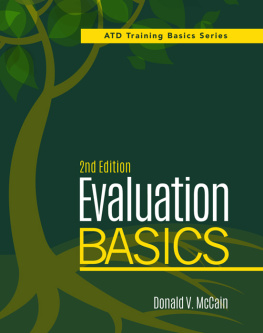
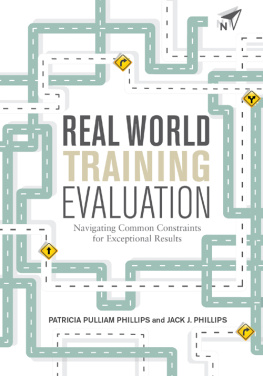
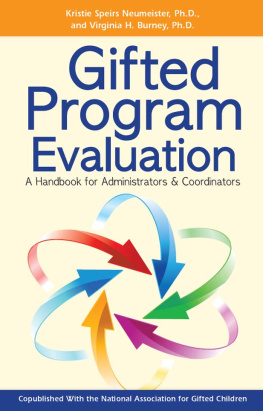
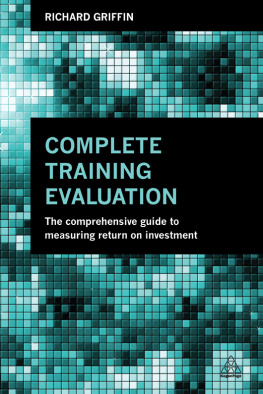


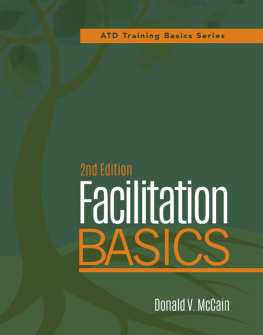
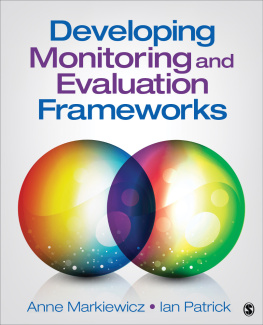

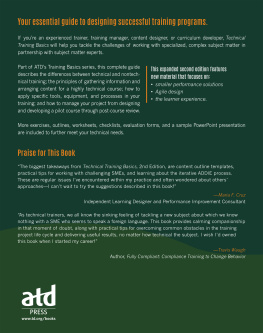



 Whats Inside This Chapter
Whats Inside This Chapter